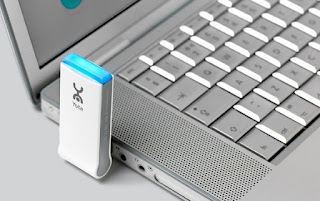If you're one of the people who has suspected cell phones/cell towers
were bad news, get ready for the latest affront to our health: The
4G/LTE network. This is the latest scheme cooked up by the greedy
telecommunications industry. It promises much faster bandwidth than the
previous 3G incarnation, thereby providing lightning-fast mobile
internet on your mobile phone or device (great for watching
YouTube/Hulu). Unfortunately, there is a major downside to 4G technology
(and all wireless technology that emits radiation for that matter), and
it comes as a cost to our health and well-being.
As the internet age has evolved, cellular phones and devices have evolved along with it. Cell phones used to be for making calls on the go. Eventually, text messaging came onto the scene, and that was the new craze. Now, 4G mobile internet and mobile video streaming is the new novelty. Unfortunately, the bandwidth required for mobile internet and video streaming on a cellular device is greater than what can be provided over older, conventional 2G/3G cell phone tower networks. So for 4G, there have been many new high-powered cell towers erected around the world, with little thought about the adverse effects that the addition of more radiation-emitting technology will cause.
physicians have noticed a continuous increase in the number of people with chronic complaints. Doctors have taken blood draws or saliva from patients, and determined in 2012 that one in three patients has radiation overload. In 2002, only one patient in 30 were radiation stressed. In 300 patients with chronic health complaints, 138 of them were caused by radiation (from wireless internet or cell phone tech). These numbers have gotten worse with 3G and ubiquitous Wi-Fi hot spots around the world. How bad are these numbers going to get with the 4G/LTE network?
Plankton were used in experiments to test the adverse properties of wireless signals in lab tests. In these experiments, the wireless-exposed plankton died or were deformed within several days of chronic exposure. With Wi-Fi it took 96 hours, 3G took 72 hours, and with 4G the plankton died within 48 hours. Since all living organisms ultimately escape the effects that unnatural radiation has on them, we must ask ourselves this: If wireless radiation is killing or deforming plankton, what is it doing to us?
As the internet age has evolved, cellular phones and devices have evolved along with it. Cell phones used to be for making calls on the go. Eventually, text messaging came onto the scene, and that was the new craze. Now, 4G mobile internet and mobile video streaming is the new novelty. Unfortunately, the bandwidth required for mobile internet and video streaming on a cellular device is greater than what can be provided over older, conventional 2G/3G cell phone tower networks. So for 4G, there have been many new high-powered cell towers erected around the world, with little thought about the adverse effects that the addition of more radiation-emitting technology will cause.
physicians have noticed a continuous increase in the number of people with chronic complaints. Doctors have taken blood draws or saliva from patients, and determined in 2012 that one in three patients has radiation overload. In 2002, only one patient in 30 were radiation stressed. In 300 patients with chronic health complaints, 138 of them were caused by radiation (from wireless internet or cell phone tech). These numbers have gotten worse with 3G and ubiquitous Wi-Fi hot spots around the world. How bad are these numbers going to get with the 4G/LTE network?
Plankton were used in experiments to test the adverse properties of wireless signals in lab tests. In these experiments, the wireless-exposed plankton died or were deformed within several days of chronic exposure. With Wi-Fi it took 96 hours, 3G took 72 hours, and with 4G the plankton died within 48 hours. Since all living organisms ultimately escape the effects that unnatural radiation has on them, we must ask ourselves this: If wireless radiation is killing or deforming plankton, what is it doing to us?














